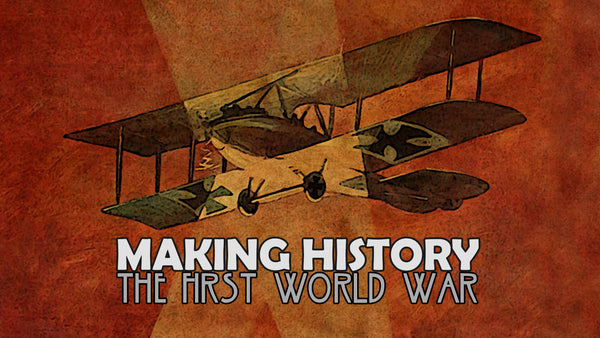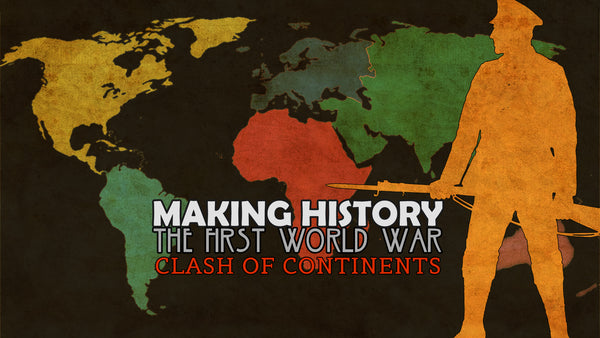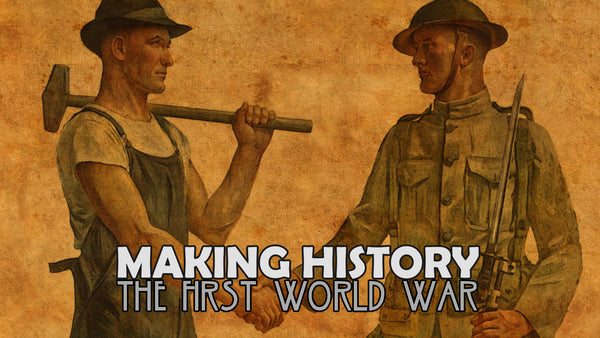
The Second World War: Air Power
In my previous post I wrote briefly about the importance of carriers in the Pacific theater and how the ability to project air power from a distance changed naval warfare. All kinds of warships were destroyed from the air, and the aircraft carrier became the principle capital ship of the modern surface fleet. Air power played a decisive role in World War II and was responsible for the destruction of entire cities. On land and at sea, the ability to dominate the air became a critical advantage.
The air war is one of the primary themes central to how we view the war as a whole. The Battle of Britain was fought in the sky, Pearl Harbor was attacked from above and day after day the Strategic Bombers arrived en mass. In Making History: The Second World War we wanted air power to have a meaningful impact in combat. And likewise, the AI must use it aggressively so the player will feel threatened and forced to deploy countering strategies.

German Luftwaffe Blitzes London (Game Image)
One new attack order allows players to use their aircraft to fly low strafing attacks. This order is both deadly and dangerous since low flying aircraft are easier to shoot down. Fighters are balanced to be better at strafing than bombing and bombers vice versa. This provides some added differential in gameplay between the two unit types.
We also have a heavy fighter unit that both bombs and strafes pretty effectively. But you shouldn’t end up only building these dual powered units since the average fighter will be cheaper and better at air to air combat and bombers will provide greater aerial destruction.

Japanese Heavy Fighter and Soviet Medium Bomber II (Game Models)
In addition to the use of the strafing attack to support land engagements, players can employ this order to attack enemy air bases. You can now catch your enemy flat footed and wipe out his air feet before it can get off the ground. This means forward air bases will need patrols.
Since this is World War II we had to include air transports and of course, paratroopers. Air movement works in a similar fashion to the way Rail, Road and Sea Capacity operates in The Great War. You build Air Transport Capacity as a resource and can move any land infantry type between regions with an airbase – within range – if you have the capacity and fuel.

Italian Air Transport and American Light Glider (Game Models)
As for airborne attacks, we have special units that alone posses the ability to be parachuted into enemy territory or use gliders. From a design perspective I’ve always been concerned about the potential for exploits with these type units. In fact when I was doing some event testing sometime after this feature was were first implemented, I started seeing France take region’s deep into Germany and I couldn’t figure out how. I thought it was a bug until the programmer reminded me about the paratroopers. This experience only increased my reluctance to have airborne attacks at all.
However, instead of backing off, we have put in a number of constraints to lessen the allure of the airborne assault. Generally speaking, these attacks were historically risky therefore we made it likewise in the game. Also, you can’t just fly deep into your neighbors nation. Still, players will want to patrol and build regional Air Defense Infrastructure to fend off enemy air incursions. Gliders are better at not being shot down but they tend to crash upon landing killing most of their units. We’ll see how this develops. More changes may be necessary to get this system balanced.

Allied Bombers attack German industrial targets (Game Image)
Strategic and heavy bombers will be powerful but expensive to operate. These weapons will hog resources in exchange for suppressing enemy production. The bombers may have to fly through regions with patrolling aircraft and anti-air defenses to reach their targets. There could be a high attrition along the flight path and only surviving aircraft can drop their payloads. A nation will likely require a significant economic edge over their enemy in order to make the use of this tactic viable. But if not countered, a continuous bombing campaign could eventually undermine a nation’s ability to fight.
We’ve also added a some later war features along with Jets, Missiles and Nuclear attacks. I’ll address these in my next post.

Regional Air Defense Infrastructure (Game Model)

American Strategic Bomber and Nuclear Bomb (Game Models)
Also in News

Making History: The First World War - Post Release Update #4

Making History: The First World War - Clash of Continents



